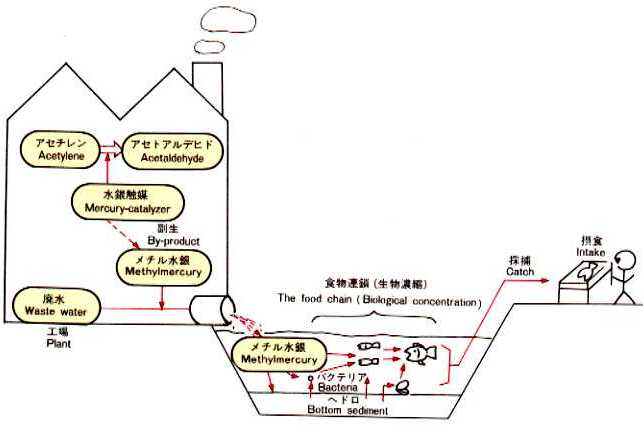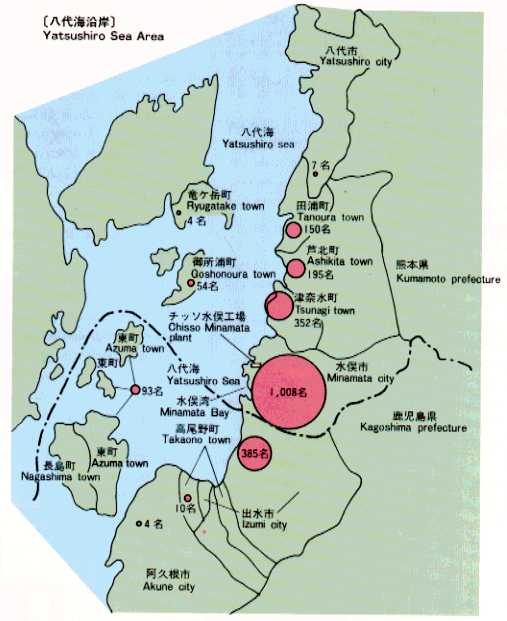Health & Chemicals
Minamata Disease The History and Measures - Chapter 3
3. Signs and Symptoms of Minamata Disease
Clinical features of Minamata Disease
Minamata Disease is a poisoning disease that nervous system, mainly central nervous system, is damaged by methylmercury. It is established that the disease differs from inorganic mercury poisoning which damages kidneys, etc., and also, it isn't confirmed that it damages organs other than nervous system.
Clinically diverse signs and symptoms are manifested; the main signs and symptoms are sensory disturbance in the distal portions of four extremities, cerebellar ataxia, bilateral concentric contraction of the visual field, disturbed ocular movement caused by central nervous system (CNS), impairment of hearing caused by CNS, and equilibrium disturbance caused by CNS, etc. Also, fetal Minamata Disease is reported, that shows impairments similar to cerebral infantile paralysis because mother is exposed to methylmercury during pregnancy.
In the initial stage of the outbreak of Minamata Disease, there were patients who had all major signs and symptoms, and some cases resulted in death. However, many patients do not shave all major signs and symptoms together.
- Fig.2: Scheme of How the Methylmercury Compound is Transmitted from the Acetaldehyde Manufacturing Process to Human Body

 Zoom in
Zoom in- Fig.3:Distribution of Occurvence of Certified Patients [31.Mar.2001]


The process of onset of Minamata Disease
There is the possibility of occurrence of Minamata Disease, like the poisoning by other substances, when the quantity of methylmercury (the causal substance) accumulated within the body reaches the threshold value for the onset. Because methylmercury taken into the body is discharged outside of the body at the same time, on the condition to continue that a certain amount of the substance is taken into the body methylmercury will not be accumulated in the body in excess of the limit accumulative amount correspond to the amount of continuous intake.
And these knowledge is supported by "IPCS Environmental Health Criteria 101 Methylmercury" issued by WHO in 1990.
Diagnosis of Minamata Disease
Because each neurological sign and symptom of Minamata Disease can be caused by other diseases as well, diagnosis of Minamata Disease is carried out for people who have been exposed to methylmercury on the basis of the diagnostic criteria which is composed of combinations of signs and symptoms in order to raise probability of decision. While diagnosis is easy for typical patients who have all major signs and symptoms, in the case of incomplete type or mild type of the disease, it may be difficult to distinguish it from other diseases.
- Table 1. Various Indices showing the Threshold Value for Onset of Symptoms in Human Body
(Level at which neurological symptoms would appear in the most sensitive adults) -
Average daily intake 3-7 μg/kg Body burden 15-35mg(50kg weight) Total mercury concentration in blood 20-50μg/100ml Total mercury concentration in hair 50-125μg/g (Source: "IPCS Environmental Health Criteria No.101 Methylmercury",etc.)
- Table 2. Effluent Standard for Mercury Based Upon the Water Pollution Control Law
-
Total mercury 0.005mg/l Alkyl mercury compounds Must not be detected
(Limit of detection 0.0005mg/l)